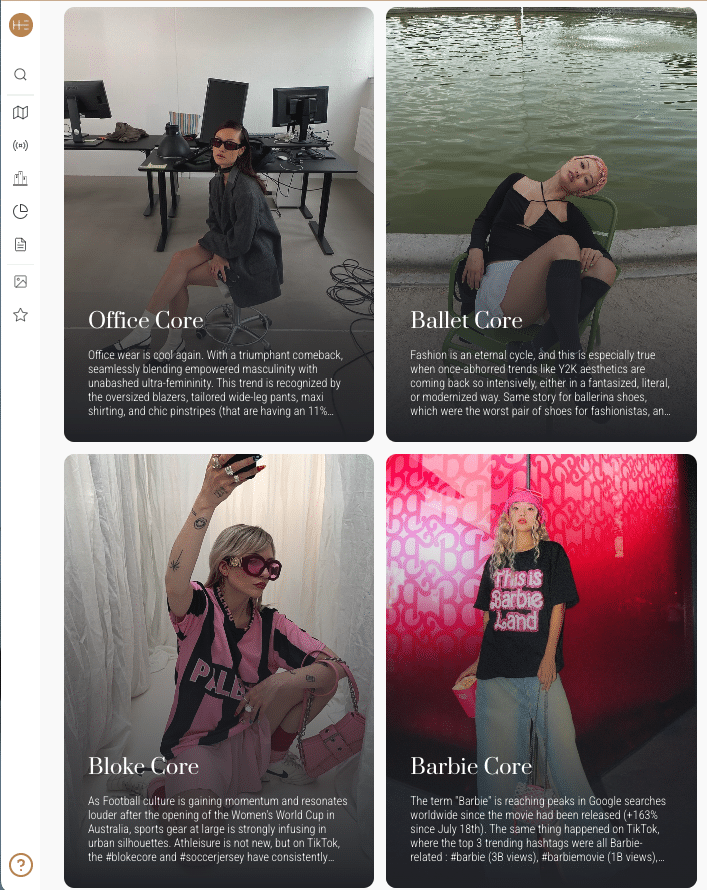As we move beyond the Covid-19 pandemic, the fashion industry is undergoing significant transformation. Consumer behaviors have evolved across Europe, the US, and China, and brands are adapting to these shifts using artificial intelligence and social media analysis to stay ahead of demand and make informed decisions about future collections.
The Cautious Consumer vs. Revenge Spending
One of the most striking changes in post-pandemic consumer behavior is the stark contrast between Western and Chinese markets. In Europe and the US, consumers remain cautious, with apparel spending expected to drop by as much as 50%. This shift has led to a focus on practical, comfort-driven fashion, emphasizing loungewear, activewear, and minimalist styles. In contrast, China is witnessing a surge in “revenge spending,” particularly in the luxury sector. Some luxury brands have reported significant sales increases, indicating that Chinese consumers are eager to indulge after months of confinement.
For fashion brands, this duality calls for a balanced strategy: focusing on essential, practical collections in Western markets, while catering to the demand for bold, luxurious pieces in China. AI-based trend forecasting offers a crucial advantage by identifying these early signals and helping brands tailor their offerings to the specific needs of each market.
Social Media: The New Consumer Hub
Throughout the pandemic, social media emerged as a primary platform for consumer engagement, with platforms like Instagram seeing a 70% increase in usage. Consumers turned to digital spaces to stay connected, and for brands, this accelerated the shift toward digital-first strategies. Brands that embraced social media as their primary communication tool—creating interactive content such as live sessions and influencer collaborations—were able to build stronger relationships with their customers.

As we move into the post-pandemic world, social media’s dominance is expected to continue. Fashion brands will need to maintain this momentum by fostering community engagement through real-time, interactive content. AI tools can help brands track social media trends and consumer sentiment, ensuring they remain responsive to these evolving shifts.
The Role of Empathy in Post-Covid Marketing
The pandemic emphasized the importance of empathy in marketing. During the crisis, brands that prioritized consumer well-being and adjusted their messaging to reflect health and safety concerns resonated more effectively with their audiences. For example, Nike’s “Stay Home, Stay Healthy” campaign pivoted away from traditional product promotion to focus on encouraging consumers to prioritize their health.
As brands move forward, purpose-driven marketing will continue to play a crucial role in fostering consumer loyalty. Fashion brands need to align their values with those of their consumers, whether by promoting wellness, sustainability, or social responsibility. With AI-powered insights, brands can better understand what their customers value most and tailor their marketing strategies accordingly.
E-Commerce and Omnichannel Retail: The Future of Fashion Sales
E-commerce thrived during the pandemic, with many platforms remaining operational as physical stores were forced to close. Brands that offered flexible policies—such as extended return periods or free shipping—were able to maintain consumer trust and drive online sales. As the world reopens, e-commerce is expected to remain a dominant sales channel, with many consumers opting for the convenience and flexibility of online shopping.
To succeed in this increasingly digital-first environment, fashion brands must develop robust omnichannel strategies that seamlessly blend digital and physical retail experiences. AI can play a pivotal role in helping brands predict which products will perform best online and in stores, ensuring inventory is allocated efficiently and aligned with consumer demand.
Sustainability: More Than a Trend
The pandemic heightened consumer demand for sustainability, with increasing numbers of consumers seeking out brands that prioritize eco-friendly practices. From ethical sourcing to sustainable production methods, sustainability is no longer an option—it has become a competitive necessity.
Fashion brands that invest in sustainable practices, such as on-demand production or using recycled materials, are better positioned to meet evolving consumer expectations. Sustainability is expected to continue playing a defining role in consumer behavior, and brands that embrace this shift can differentiate themselves in an increasingly crowded market.
A New Approach to Fashion Seasons
The pandemic blurred the lines of traditional fashion seasons, with many brands moving away from the rigid Spring/Summer and Fall/Winter collections. Seasonless collections offer brands greater flexibility and longevity, allowing them to produce versatile pieces that cater to consumers’ changing needs year-round.
This shift toward seasonless fashion is both practical and sustainable, reducing overproduction and inventory waste. For brands, focusing on timeless, versatile designs will be key to capturing the attention of consumers who are increasingly seeking value and durability in their purchases.
The post-pandemic landscape of fashion demands adaptability, innovation, and a deep understanding of evolving consumer behaviors. By leveraging artificial intelligence and data-driven insights, fashion brands can anticipate trends, optimize their collections, and connect more meaningfully with their audience. In this fast-moving industry, those who embrace change and use advanced technology to guide their strategies will be well-positioned for success in the years to come.




